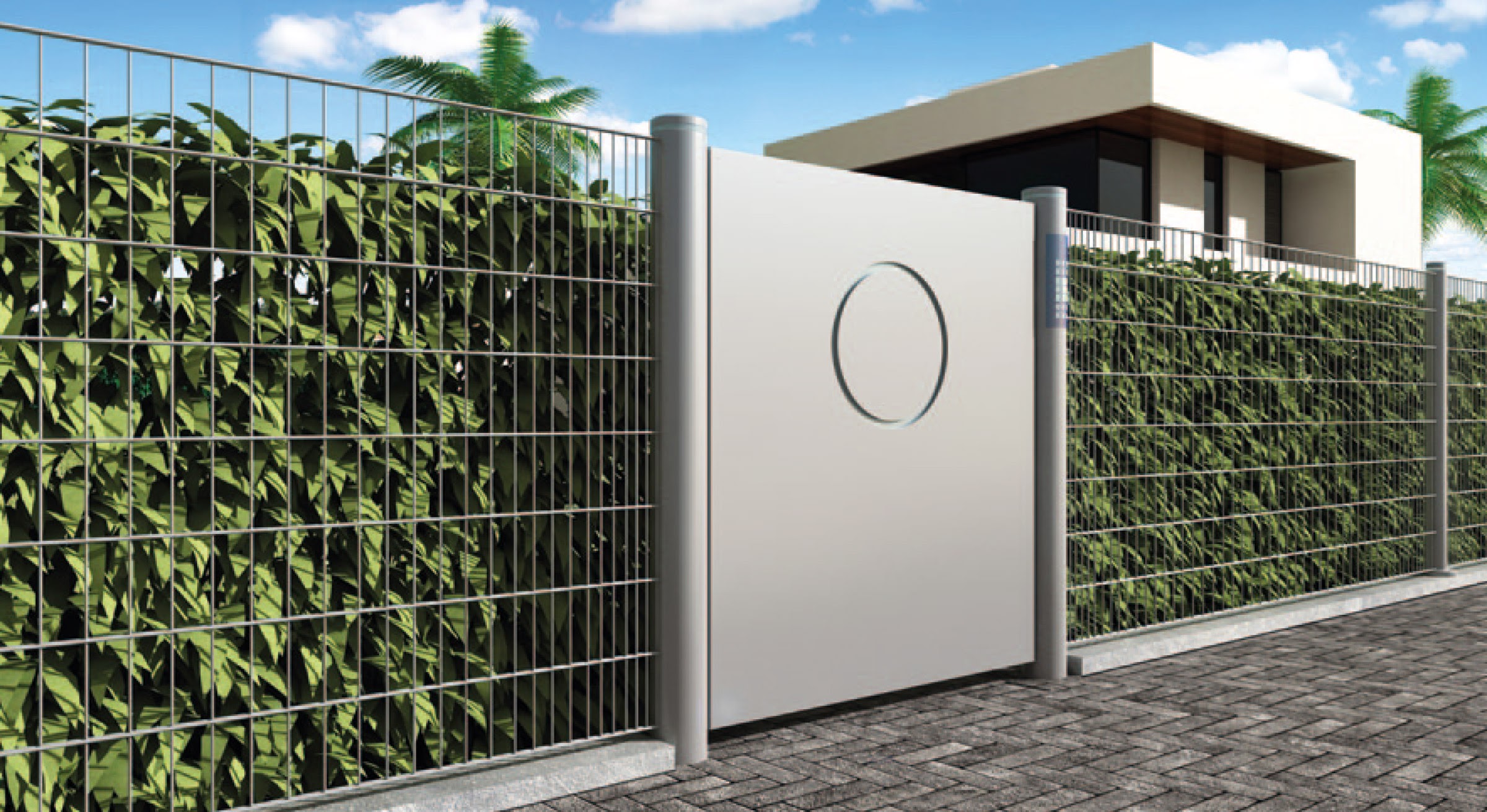A quality gate is the essential element to complete any fence system. By choosing it accurately, you obtain an integrated and consistent fence not only from an aesthetic but also a functional point of view. In this article we will take a look at the main types of gates on the market and the related materials, with a focus on the needs of two of the most important uses, namely: residential and sports.
GATES: TYPES AND MATERIALS
Among the most common types of gates, we have:
- swing gates with two doors that open inwards or outwards;
- sliding gates with a track that allows the gate to slide along the perimeter of the fence.
Both are valid options; of course the choice of one over the other depends mostly on the context of use and the space available; the swing gate in fact requires more space than the sliding one.
Another important distinction is the following:
- pedestrian gates intended exclusively for pedestrian transit, typically compact and with a manual, swing opening;
- driveway gates destinated to the passage of motorised vehicles, in most cases automated.
Regarding materials, we may distinguish two main categories:
- metal and more specifically: wrought iron and steel;
- wood.
Of course, also the choice of the most appropriate material must be dictated by the context of use. In the case of residential contexts in which the aesthetic factor plays a key role and is linked to a specific outdoor style, wood (preferably pretreated) could be the most appropriate choice, provided that periodic maintenance is performed. The same applies to wrought iron that allows the creation of gates with high ornamental value but, like wood, it requires careful maintenance, in particular to avoid the appearance of rust. When instead the aim is to achieve high levels of safety, durability and resistance, the typical choice is steel, in particular galvanized steel, which withstands atmospheric agents and is free of the risk of corrosion.
Local regulations offer specific guidance on the permits required before proceeding with the installation and at the same time on the forms, types and colours favoured in the area where you live, particularly in the case of historic centres with specific restrictions. It is therefore essential to enquire about any local restrictions before proceeding with a purchase. Another important element from a legal point of view is that the opening of the gate itself must not come into contact with public property. Furthermore, in the case of an automated gate it is advisable to install a warning light to warn pedestrians and vehicles of the possible exit of a vehicle.
CAVATORTA GATES
Our catalogue offers different types of gates. Here we list them in relation to the uses for which they were designed, highlighting their specific technical qualities.
Gates for the residential sector
In the residential sector, we offer two different types of products, which are radically different from each other.
Pedestrian gates and driveway gates in plastic-coated steel
Designed to complete the fencing of a private green area, they are characterised by a simple and linear style. Both have a perimeter frame and support poles that offer solidity and strength. The coating is obtained by phosphating with zinc salts and polyester lamination to ensure excellent performance over time.
Moonline gates
The perfect combination of aesthetics and technical performance. The Moonline range gates are part of an innovative integrated fence system, devoted to minimal lines and high safety standards based on solidity, durability and the intelligent use of light as a further element to protect the private area. Moonline gates are available in two different designs: O Type, characterised by soft lines, and Q Type, characterised by square shapes.
Gates for the sports sector
Sports fences and related gates must comply with specific safety regulations. Cavatorta pedestrian and driveway gates comply with the specifications laid down by UNI 10121-2:1992 standards.
More specifically, they are characterised by the following:
- perimeter frame and support posts in square steel tube;
- clad in electrowelded wire mesh;
- steel locking system components;
- highly visible yellow lamination.
